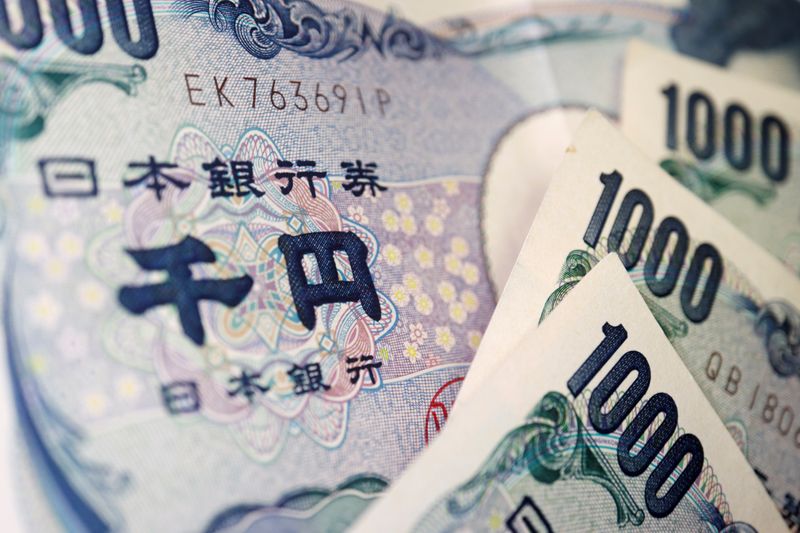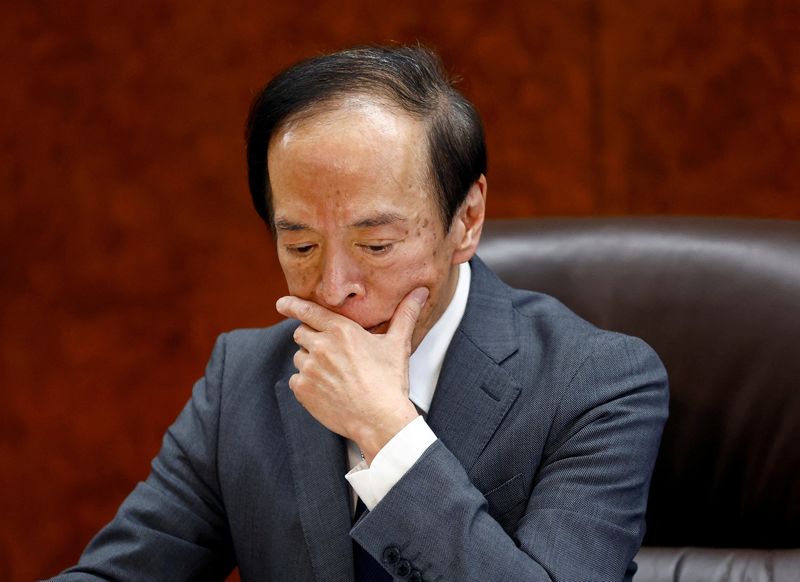By Leika Kihara
TOKYO (Reuters) – One of Bank of Japan Governor Kazuo Ueda’s main challenges will be to phase out yield curve control (YCC), which has come under criticism for distorting markets by keeping long-term interest rates from rising.
Under YCC, the BOJ targets short-term interest rates at -0.1% and the 10-year government bond yield around 0%. It also sets an allowance band of 0.5% above and below the yield target.
Here is how Japan’s YCC works and its potential pitfalls.
WHY YCC?
After years of huge bond buying failed to fire up inflation, the BOJ cut short-term rates below zero in January 2016 to fend off an unwelcome yen rise. The move crushed yields across the curve, outraging financial institutions that saw returns on investment evaporate.
To pull long-term rates back up, the BOJ adopted YCC eight months later by adding a 0% target for 10-year bond yields to its -0.1% short-term rate target.
The idea was to control the shape of the yield curve to suppress short- to medium-term rates – which affect corporate borrowers – without depressing super-long yields too much and reducing returns for pension funds and life insurers.
HOW DOES IT WORK?
The BOJ chose a rate regime because it had reached the limit of quantitative easing, where it bought targeted amounts of bonds to push down yields, hoping to stoke inflation and economic activity.
After the central bank had gobbled up half the bond market, it was hard to commit to buying at a set pace. YCC allowed the BOJ to buy only as much as needed to achieve its 0% yield target. The bank has tapered bond buying in times of market calm to lay the groundwork for an eventual end to ultra-easy policy.
WHY THE TARGET BAND?
As stubbornly low inflation forced the BOJ to maintain YCC longer than expected, bond yields began to hug tight ranges and trading volume dwindled.
To address such side-effects, the BOJ said in July 2018 the 10-year yield could move 0.1% above or below zero.
In March 2021, the bank widened the band to 0.25% in either direction to breathe life back into a market its buying had paralysed.
Under attack from investors betting on a rate hike, the BOJ doubled the band in December last year to 0.5% above or below zero and ramped up bond buying to defend the ceiling.
PITFALLS?
YCC worked well when inflation was low and prospects for hitting the BOJ’s price target were slim, as investors could sit on a pile of government debt that ensured safe returns.
That changed last year, when soaring commodity prices pushed inflation above the 2% target and gave investors reason to attack the yield cap.
The BOJ ramped up buying, including through offers to buy unlimited amounts of bonds, to defend its yield cap.
The move has been criticised by analysts for distorting market pricing and fuelling an unwelcome yen plunge that inflated the cost of raw material imports.
WHAT NOW?
Haunted by a history of political heat for dialling back stimulus prematurely, the BOJ wants to avoid raising rates until it is clear inflation will sustainably hit the bank’s 2% target, backed by higher wage growth.
But BOJ policymakers also want to avoid a repeat of last year, when it was forced to buy bonds relentlessly to defend the yield cap.
As such, the central bank could take steps to make YCC more sustainable, such as by allowing bond yields to rise more flexibly reflecting accelerating growth and inflation.
The Nikkei newspaper said the BOJ will discuss allowing the 10-year yield to briefly breach its 0.5% cap, while taking steps to combat any abrupt spike in yields.
Allowing long-term yields to rise more will take pressure off the BOJ to boost bond buying, and help prevent further unwelcome declines in the yen.
But there is uncertainty on how successful the BOJ could be in relaxing its grip on yields, without causing huge market volatility.
Ueda will likely frame any tweak to YCC as an attempt to make the BOJ’s ultra-loose policy more sustainable, rather than a prelude to a full-fledged interest rate hike cycle.
Markets may not take it that way and start pricing in the chance of a slow but steady normlisation of the BOJ’s radical stimulus programme.
(Reporting by Leika Kihara; Editing by Sam Holmes)

